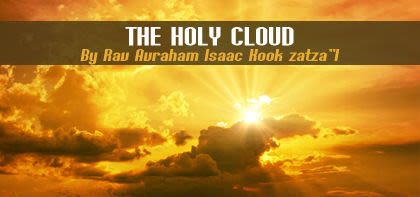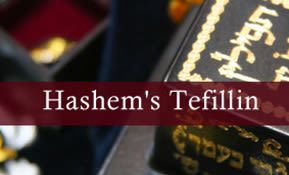
Acharei Mot: The Holy Cloud
Parshat Achrei Mot: What is this special connection between the ketoret and the Yom Kippur service? And why did it need to be finely pulverized, more than the incense that was offered on other days?

Translated and abridged by Rabbi Chanan Morrison
Parshat Achrei Mot
The high priest was permitted to enter the inner sanctuary of the Temple only one day in the year — on Yom Kippur.
"Speak to your brother Aaron, that he may not enter the sanctuary within the partition at any time… so that he may not die, for I appear over the Ark cover in a cloud." (Lev. 16:2)
What exactly was this cloud inside the Holy of Holies? In Yoma 53a, the Talmud explains that this was a cloud of incense smoke. The ketoret (incense) played a central role in the holy service of Yom Kippur. Only after burning the ketoret inside the Holy of Holies was the high priest allowed to enter, as it says:
"Then he shall take a fire pan full of burning coals … together with both hands' full of finely pulverized incense … so that the cloud from the incense will envelope the ark cover." (Lev. 16:12-13)
What is this special connection between the ketoret and the Yom Kippur service? And why did it need to be finely pulverized, more than the incense that was offered on other days?
Beyond Time
Once a year, the kohanim would prepare an entire year's supply of ketoret — 368 portions. Why 368? One  portion for each day of the year, plus an extra three portions for Yom Kippur. Why did Yom Kippur require an extra three measures of incense?
portion for each day of the year, plus an extra three portions for Yom Kippur. Why did Yom Kippur require an extra three measures of incense?
The central theme of Yom Kippur is teshuvah (repentance) and kapparah (atonement). What is remarkable about these concepts is that they allow us to rewrite the past. Teshuvah is not just about attaining forgiveness for past misdeeds. The Sages taught (Yoma 86b) that there is a level of elevated teshuvah by which "sins are transformed into merits." They further explained that "itzumo shel yom mechapeir" (Yoma 85b) — the day of Yom Kippur itself, even without the Temple service, has powers of atonement . What gives Yom Kippur this unique ability to transcend time and change history?
Within Yom Kippur rests the inner content of the entire year. The Torah employs an exceptional phrase to describe Yom Kippur: "achat bashanah" — "once in the year" (Lev. 16:34). Yom Kippur contains a singular quality that illuminates during the entire year. Thus the paradox: the special nature of the Day of Atonement appears achat — once a year, within the framework of time — but at the same time, it is bashanah — it influences and elevates the entire year, transcending the normal boundaries of time.
We can distinguish between three aspects of Yom Kippur and its special relationship to time. First is the special nature of the day itself, with its own unique inner holiness. Second is the quality by which it can repair and redeem the previous year. And third is its influence to prepare and elevate the coming year. Since Yom Kippur affects time in three directions — present, past, and future – the Yom Kippur service requires three extra measures of ketoret, above and beyond its quota as one of the 365 days of the year.
Extra Fine
Why did the ketoret of Yom Kippur require special treatment, being finely pulverized the day before Yom Kippur?
Despite the fact that incense engages our most refined sense (see Berachot 43b), the daily ketoret is offered witin the framework of time, and thus relates to our physical reality. But on Yom Kippur, the incense needs to be "dakah min hadakah" — it is returned to the mortar to be pounded until it becomes a fine powder. The ketoret of Yom Kippur must match the singular holiness of the day. It must be extraordinarily refined, unfettered by the limitations of physicality and our material needs. Only then will the ketoret correspond to Yom Kippur's lofty images of abstract spiritual thought and holy aspirations.
* * *
(adapted from Olat Re'iyah vol. I pp. 139-141)
Rabbi Chanan Morrison of Mitzpeh Yericho runs http://ravkookTorah.org, a website dedicated to presenting the Torah commentary of Rabbi Avraham Yitzchak HaCohen Kook, first Chief Rabbi of Eretz Yisrael, to the English-speaking community. He is also the author of Gold from the Land of Israel (Urim Publications, 2006).







Tell us what you think!
Thank you for your comment!
It will be published after approval by the Editor.